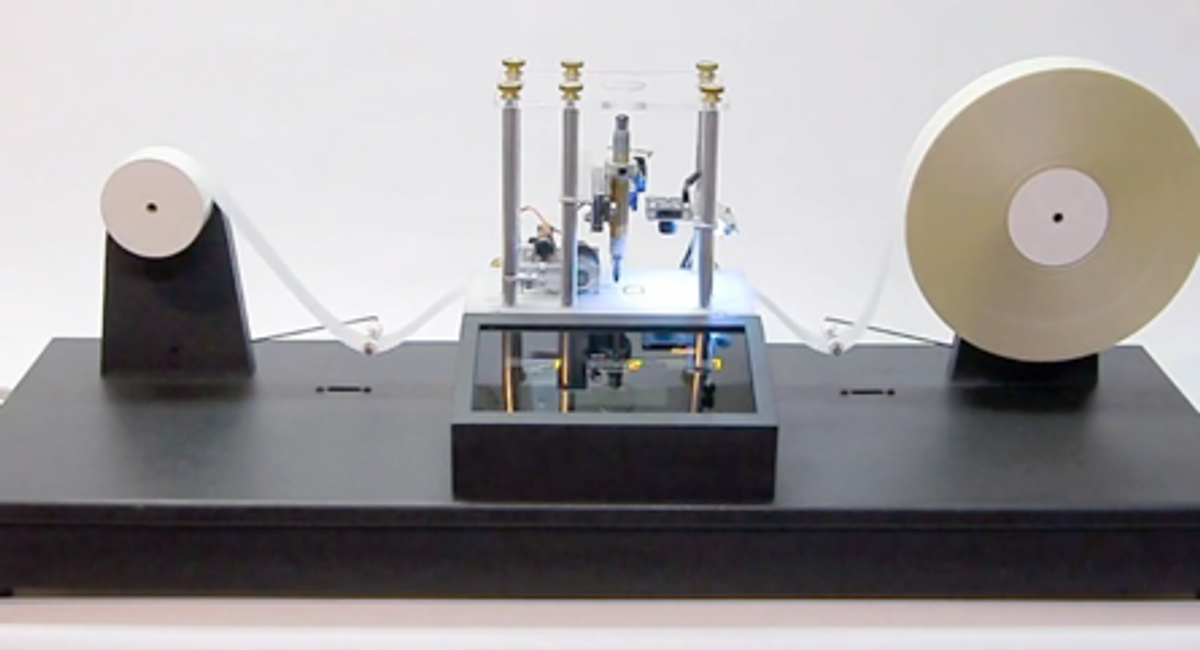Everyone who's read about Alan Turing and his ideas on computation probably has created a mental picture of the theoretical computing device he conceived and that we now call a Turing machine. Mike Davey, a DIY guy from Wisconsin, wasn't satisfied with just imagining the thing. So he built one.
Though there are other Turing machine implementations out there -- including a Lego-based design -- Davey wanted to built one that looked like Turing's original concept.
The result -- holy algorithms. The thing is a beauty. A read-write head? Check. A moving tape for the bits? Check.
From now on whenever I think of a Turing machine I'll picture Davey's.
Watch the video below to see the machine in action, then go to his web site aturingmachine.com to see descriptions of the hardware and the programs he's run. From the site:
My goal in building this project was to create a machine that embodied the classic look and feel of the machine presented in Turing’s paper. I wanted to build a machine that would be immediately recognizable as a Turing machine to someone familiar with Turing's work.
Although this Turing machine is controlled by a Parallax Propeller microcontroller, its operation while running is based only on a set of state transformations loaded from an SD card and what is written to and read from the tape. While it may seem as if the tape is merely the input and output of the machine, it is not! Nor is the tape just the memory of the machine. In a way the tape is the computer. As the symbols on the tape are manipulated by simple rules, the computing happens. The output is really more of an artifact of the machine using the tape as the computer.
The heart of the turing machine is the read-write head. The read-write head transports the tape and positions cells of the tape appropriately. It can read a cell determining what, if any, symbol is written there. The machine works on, and knows about, only one cell at a time. The tape in my machine is a 1000’ roll of white 35mm film leader. The characters, ones and zeros, are written by the machine with a black dry erase marker.
Erico Guizzo is the director of digital innovation at IEEE Spectrum, and cofounder of the IEEE Robots Guide, an award-winning interactive site about robotics. He oversees the operation, integration, and new feature development for all digital properties and platforms, including the Spectrum website, newsletters, CMS, editorial workflow systems, and analytics and AI tools. An IEEE Member, he is an electrical engineer by training and has a master’s degree in science writing from MIT.





